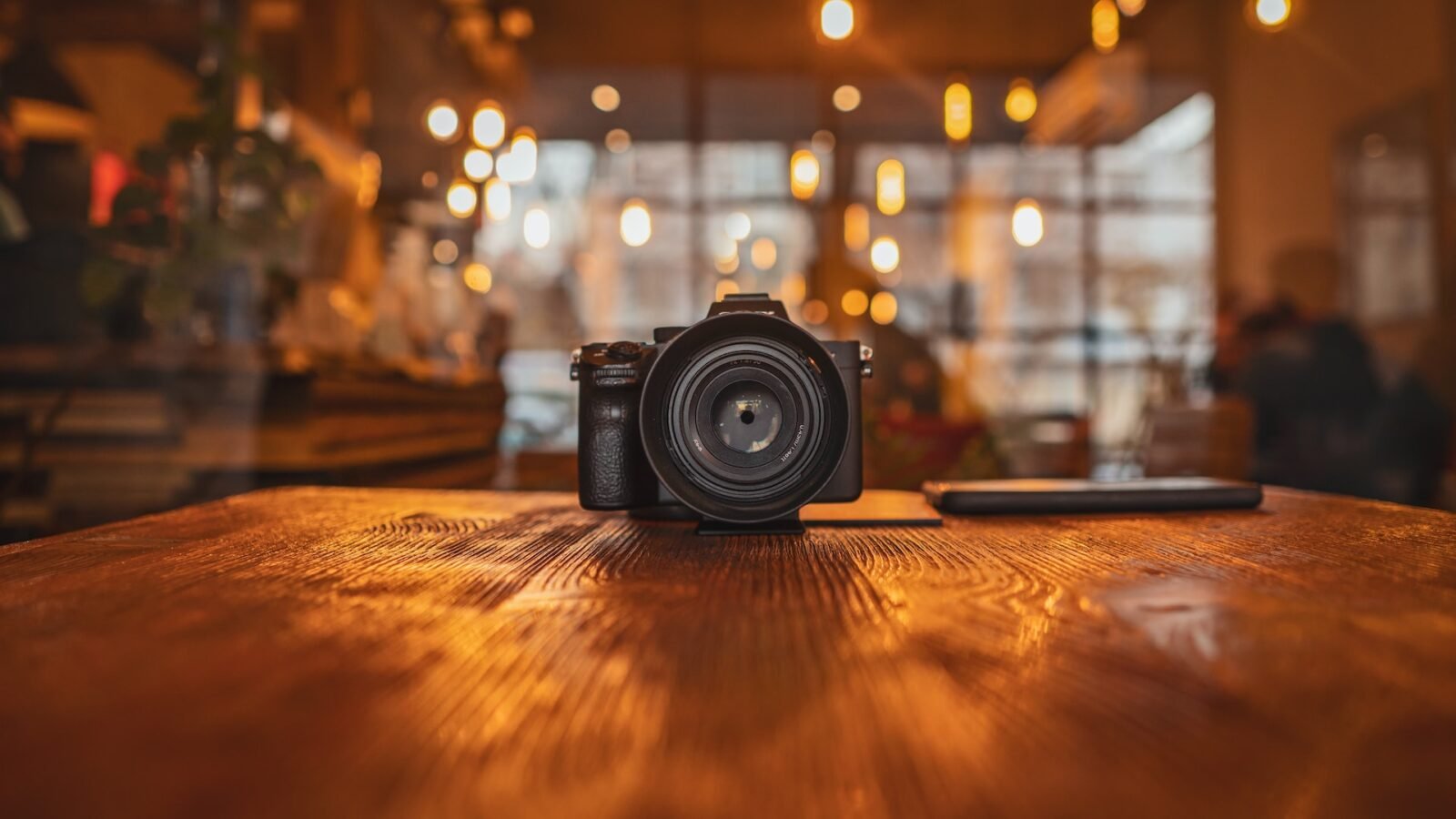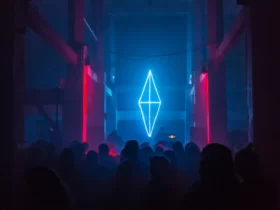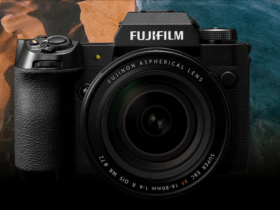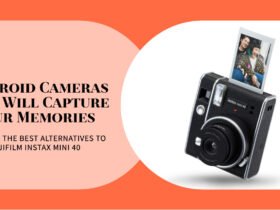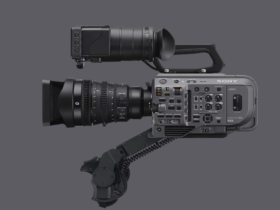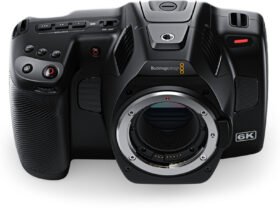Welcome back to FilmmakingElements.com, your ultimate destination for all things filmmaking! In today’s article, we are diving deep into the world of mirrorless cameras as we list the Top 5 Sony Alpha 7 III Alternatives.
The Sony Alpha 7 III has been a game-changer in the photography and videography industry, thanks to its incredible features, performance, and affordability. But we understand that every creative has their unique preferences and requirements, which is why we’ve curated this list of exceptional alternatives that are on par with the Alpha 7 III, and may even surpass it in certain aspects. So, buckle up and get ready to explore these outstanding options that could be the perfect fit for your next project.
1. Fujifilm X-T5

The Fujifilm X-T5 is a great alternative to the Sony Alpha 7 III, offering similar features and specs, but with a few key differences. Let’s compare and contrast the two cameras across various categories.
Sensor
The Sony Alpha 7 III has a 35.6 x 23.8 mm (Full-Frame) CMOS sensor, while the Fujifilm X-T5 has a smaller 23.5 x 15.6 mm (APS-C) CMOS sensor. The difference in sensor size means that the Sony Alpha 7 III has better low-light performance and shallower depth of field than the Fujifilm X-T5. However, the Fujifilm X-T5’s smaller sensor has the advantage of being less expensive and lighter, making it a great choice for those who prioritize portability and cost-effectiveness.
Autofocus
Both cameras have excellent autofocus systems, but the Sony Alpha 7 III’s AF system is slightly more advanced, with 693 phase-detection autofocus points and 425 contrast-detection autofocus points. The Fujifilm X-T5, on the other hand, has 425 phase-detection autofocus points and 117 contrast-detection autofocus points. However, the Fujifilm X-T5’s autofocus system is still very good and performs well in most situations.
Speed
Both cameras have fast burst modes, but the Fujifilm X-T5’s electronic shutter is faster, offering up to 20 frames per second (fps) in full resolution, while the Sony Alpha 7 III offers up to 10 fps in full resolution. The Fujifilm X-T5’s electronic shutter is also completely silent, making it ideal for discreet shooting.
Design
In terms of dimensions, the Sony Alpha 7 III is slightly larger and heavier than the Fujifilm X-T5, measuring 5 x 3.8 x 2.9 inches and weighing 1.43 pounds, while the Fujifilm X-T5 measures 5.3 x 3.7 x 2.3 inches and weighs 1.27 pounds. Both cameras are weather-sealed and have magnesium alloy bodies, making them durable and resistant to dust and moisture.
Viewfinder and LCD monitor
Both cameras have excellent electronic viewfinders (EVFs) with high resolution and 100% coverage. The Sony Alpha 7 III’s EVF has a slightly higher magnification of 0.78x, while the Fujifilm X-T5’s EVF has a magnification of 0.8x. Both cameras also have tilting touchscreen LCD monitors, but the Fujifilm X-T5’s LCD monitor has a higher resolution of 1,084,000 dots, compared to the Sony Alpha 7 III’s LCD monitor, which has a resolution of 921,600 dots.
Battery life
The Sony Alpha 7 III has a longer battery life than the Fujifilm X-T5, with up to 710 shots per charge compared to the Fujifilm X-T5’s 390 shots per charge. Both cameras use rechargeable lithium-ion batteries.
Lens Mount and Availability
The Sony Alpha 7 III uses the Sony E-mount, while the Fujifilm X-T5 uses the Fujifilm X-mount. Both mounts have a good selection of lenses available, but the Sony E-mount has more third-party options. However, the Fujifilm X-mount has a few unique lenses, such as the Fujinon XF 56mm f/1.2 R and the Fujinon XF 16mm f/1.4 R WR.
Price
The Sony A7 III is priced at $1,998, while the Fujifilm X-T5 is priced at $1,699. While the Sony A7 III is a full-frame camera, it’s worth noting that the Fujifilm X-T5 offers similar image quality and features in a smaller and lighter form factor at a lower price point.
Overall, the Fujifilm X-T5 is a great alternative to the Sony A7 III, especially for those looking for a smaller and lighter camera. It offers similar image quality, performance, and features, including 4K video recording, advanced autofocus, and image stabilization. The X-T5’s design, viewfinder, and touchscreen functionality are also noteworthy advantages over the Sony A7 III. However, the Sony A7 III offers a longer battery life and a wider range of lenses to choose from. Ultimately, the choice between these two cameras depends on your personal preferences and shooting needs.
2. Nikon Z6 II

Nikon Z6 II is a relatively new camera that offers some unique advantages over its Sony counterpart. We’ll compare the specs of both cameras and discuss why the Nikon Z6 II is a great alternative to the Sony Alpha 7 III for those who want a high-quality full-frame mirrorless camera.
Sensor
Both Sony A7 III and Nikon Z6 II are full-frame mirrorless cameras, which means they have larger sensors than APS-C cameras. The larger sensor of full-frame cameras enables them to capture more light, which results in better image quality, improved low-light performance, and increased depth-of-field control.
The Sony A7 III has a 24.2-megapixel full-frame CMOS sensor, while the Nikon Z6 II has a slightly higher resolution 24.5-megapixel full-frame CMOS sensor. Both cameras have built-in image stabilization that compensates for camera shake up to 5 stops.
Overall, the sensor performance of these cameras is impressive, and they produce high-quality images with excellent dynamic range, low noise, and fine detail. However, the Nikon Z6 II has a slight edge over the Sony A7 III in terms of resolution and color depth, which can be noticeable in certain situations.
Autofocus
Both cameras have advanced autofocus systems that make it easy to capture sharp, well-focused images in a variety of shooting situations.
The Sony A7 III has a hybrid autofocus system that combines 693 phase-detection points and 425 contrast-detection points, which provide excellent coverage across the frame. The autofocus system is fast and accurate, with tracking capabilities that allow the camera to maintain focus on moving subjects.
On the other hand, the Nikon Z6 II has a hybrid autofocus system that uses 273 phase-detection points and 90% frame coverage. The autofocus system is fast and reliable, with excellent low-light performance and subject tracking capabilities.
Overall, both cameras have advanced autofocus systems that perform well in various shooting scenarios, including low light and fast-moving subjects. However, the Sony A7 III has more autofocus points and better subject tracking capabilities, which can be an advantage for some photographers.
Speed
Both cameras are fast and responsive, with impressive burst rates that allow you to capture action and fast-moving subjects.
The Sony A7 III can shoot up to 10 frames per second (fps) in full resolution, which is impressive for a full-frame camera. It also has a large buffer that can hold up to 177 JPEG images or 89 RAW images, which means you can shoot continuously for an extended period.
On the other hand, the Nikon Z6 II has an even faster burst rate of up to 14 fps, which is among the fastest for full-frame cameras. It also has a large buffer that can hold up to 124 12-bit RAW images or 200 JPEG images, which is impressive.
Overall, both cameras are fast and responsive, with impressive burst rates and buffer capacities. However, the Nikon Z6 II has a slight edge over the Sony A7 III in terms of speed and buffer capacity.
Design
Both cameras have similar dimensions and weight, with the Sony A7 III measuring 5.0 x 3.8 x 2.9 inches and weighing 1.43 pounds, while the Nikon Z6 II measures 5.3 x 4.0 x 2.7 inches and weighs 1.4 pounds.
The Sony A7 III has a more ergonomic grip, which makes it comfortable to hold for extended periods, while the Nikon Z6 II has a more minimalist design that some photographers might prefer.
Overall, both cameras have similar dimensions and weight, and the choice between them will depend on personal preference and shooting style.
Viewfinder and LCD monitor
Both the Sony A7 III and the Nikon Z6 II have electronic viewfinders (EVFs) and tilting touchscreen LCD monitors. The Sony A7 III’s EVF has a resolution of 2.36 million dots and a magnification of 0.78x, while the Nikon Z6 II’s EVF has a resolution of 3.69 million dots and a magnification of 0.8x. The Nikon Z6 II’s EVF is slightly better than the Sony A7 III’s in terms of resolution and magnification.
Both cameras have tilting touchscreen LCD monitors. The Sony A7 III’s screen is 3 inches and has a resolution of 921,600 dots, while the Nikon Z6 II’s screen is slightly larger at 3.2 inches and has a higher resolution of 2.1 million dots. Both screens can be tilted up and down for easier high and low-angle shooting, and both screens can also be used to touch focus and control various camera settings.
Battery life
Battery life is an important consideration for any camera, and both the Sony A7 III and the Nikon Z6 II have good battery life. The Sony A7 III uses an NP-FZ100 rechargeable lithium-ion battery that is rated for approximately 610 shots per charge. The Nikon Z6 II uses an EN-EL15c rechargeable lithium-ion battery that is rated for approximately 340 shots per charge. However, both cameras can be extended significantly with optional battery grips, which are available for both models.
Lens Mount and Availability
Both the Sony A7 III and the Nikon Z6 II have their own lens mounts. The Sony A7 III uses the Sony E-mount, while the Nikon Z6 II uses the Nikon Z-mount. Both mounts are relatively new and offer a range of high-quality lenses. However, Sony has had more time to build up its lens lineup, and currently offers a wider range of lenses than Nikon for its E-mount system. However, Nikon is catching up quickly and has released a number of high-quality lenses for the Z-mount over the past couple of years.
Additionally, both cameras can use lenses from other manufacturers with the use of adapters. Sony E-mount cameras have a wide range of adapters available, including those that allow the use of Canon EF lenses, while Nikon Z-mount cameras have adapters that allow the use of Nikon F-mount lenses and others.
Price
The Sony A7 III is currently priced at around $1,998 for the body only, while the Nikon Z6 II is priced at around $1,996 for the body only. Both cameras are competitively priced and offer a lot of value for the money.
The Nikon Z6 II is a great alternative to the Sony A7 III for those looking for a full-frame mirrorless camera. It has a similar sensor, autofocus system, and speed, and is slightly better in terms of design, viewfinder, and LCD monitor. While Sony currently has a wider range of lenses for its E-mount system, Nikon is catching up quickly and has released some impressive lenses for the Z-mount. Overall, both cameras are excellent options, and the choice between them will ultimately depend on personal preferences and shooting needs.
3. Sony A6600

The Sony A6600 is a highly capable and feature-packed camera that offers a number of advantages over its more expensive full-frame counterpart, the Sony A7 III. While the A7 III is undoubtedly an impressive camera, the A6600 is a worthy alternative for those who want a smaller, more portable camera that still offers professional-grade features and image quality. We will delve into the details of the A6600’s features and explain why it’s a good alternative to the A7 III.
Sensor
One of the most significant differences between the A6600 and A7 III is the sensor size. The A7 III has a full-frame sensor, while the A6600 has an APS-C sensor. While full-frame sensors offer certain advantages over APS-C sensors, such as better low-light performance and a shallower depth of field, APS-C sensors have their own benefits, such as a smaller size and lower cost. The A6600’s APS-C sensor has a resolution of 24.2 megapixels, which is more than enough for most photographers.
Autofocus
Both the A6600 and A7 III feature highly advanced autofocus systems, but the A6600 has a slight edge in this area. The A6600’s autofocus system features 425 phase-detection autofocus points and 425 contrast-detection autofocus points, which cover approximately 84% of the image area. This advanced autofocus system allows for fast, accurate, and reliable autofocus, even in challenging lighting conditions.
Speed
The A6600 is a faster camera than the A7 III in several ways. For example, the A6600 has a faster burst rate of up to 11 frames per second (fps), compared to the A7 III’s maximum burst rate of 10 fps. Additionally, the A6600 has a faster maximum shutter speed of 1/4000 of a second, compared to the A7 III’s maximum shutter speed of 1/8000 of a second.
Design
The A6600 is a smaller and lighter camera than the A7 III, making it more portable and easier to carry around. The A6600 measures 4.72 x 2.63 x 2.73 inches (120 x 66.9 x 69.3 mm) and weighs 1.11 pounds (503 grams) with the battery and recording media, while the A7 III measures 5 x 3.8 x 2.9 inches (126.9 x 95.6 x 73.7 mm) and weighs 1.43 pounds (650 grams). Despite its smaller size, the A6600 is still a well-built and robust camera, with a magnesium alloy body that feels solid and durable in the hand.
Viewfinder and LCD monitor
Both the A6600 and A7 III feature high-quality electronic viewfinders (EVFs) that provide a clear and detailed view of the scene. The A6600’s EVF has a resolution of 2.36 million dots, while the A7 III’s EVF has a resolution of 2.36 million dots. Additionally, both cameras feature 3-inch LCD touchscreens that can be tilted up and down for easier viewing in different shooting situations.
Battery Life
One of the key differences between the Sony A7 III and A6600 is their battery life. The A7 III has a larger battery capacity and can take up to 710 shots per charge, while the A6600’s battery life is rated for around 810 shots per charge. This can be an important consideration, especially for photographers who need to shoot for long hours without access to power.
Lens Mount and Availability
Both the Sony A7 III and A6600 use the Sony E-mount lens system. However, since the A7 III is a full-frame camera, it has a wider selection of lenses available to it, including full-frame lenses. On the other hand, the A6600 being an APS-C camera, has a smaller selection of lenses available to it, but there are still many options available.
Price
Finally, price is a significant factor when deciding between the Sony A7 III and A6600. The A7 III is currently priced at around $1,998, while the A6600 is priced at around $1,398. This price difference can be significant for some buyers and may be a decisive factor in their purchasing decision.
Overall, both the Sony A7 III and A6600 are excellent cameras with many similarities and some key differences. If you’re a professional photographer or videographer who needs a full-frame camera and has the budget for it, the A7 III may be the better option. However, if you’re looking for a more compact camera with excellent autofocus and image quality, the A6600 is an excellent choice.
4. Panasonic Lumix S5 II

The Panasonic Lumix S5 II is an excellent alternative to the Sony Alpha 7 III, offering many similar features and capabilities, while also bringing some unique advantages to the table. We will explore the different aspects of these two cameras to understand why the Lumix S5 II could be a better option than the Sony Alpha 7 III.
Sensor
Both the Sony Alpha 7 III and Panasonic Lumix S5 II have a full-frame CMOS sensor, which means they offer superior low-light performance, dynamic range, and shallow depth of field compared to APS-C sensors. However, the Lumix S5 II sensor is slightly higher in resolution at 25.28 megapixels compared to the Alpha 7 III’s 24.2 megapixels, which could make a difference in some situations.
Autofocus
The autofocus system on both cameras is exceptional, with fast and accurate performance even in low light conditions. However, the Lumix S5 II offers an advantage in terms of autofocus points, with 779 contrast-detection and phase-detection AF points compared to the Alpha 7 III’s 693 phase-detection points. Additionally, the Lumix S5 II has better autofocus sensitivity, with a range of -6 to +18 EV, while the Alpha 7 III has a range of -3 to +20 EV.
Speed
The Sony Alpha 7 III is slightly faster than the Lumix S5 II, with continuous shooting speeds of up to 10fps compared to the Lumix S5 II’s 9fps. However, the Lumix S5 II offers better electronic shutter speeds of up to 60 seconds in bulb mode compared to the Alpha 7 III’s 30 seconds.
Design
The Sony Alpha 7 III has a slightly smaller and lighter body than the Lumix S5 II, measuring 5 x 3.8 x 2.9″ and weighing 1.43 lbs, while the Lumix S5 II measures 5.2 x 3.8 x 3.1″ and weighs 1.6 lbs. However, both cameras are relatively compact and lightweight for full-frame cameras, making them highly portable.
Viewfinder and LCD monitor
Both cameras have high-quality electronic viewfinders with 100% coverage and high resolution, with the Alpha 7 III offering a slightly larger viewfinder at 0.78x magnification compared to the Lumix S5 II’s 0.76x magnification. The LCD screens on both cameras are tiltable and touch-sensitive, with the Lumix S5 II offering a higher resolution at 1,840,000 dots compared to the Alpha 7 III’s 921,600 dots.
Battery life
Both cameras have decent battery life, with the Alpha 7 III offering a slightly higher number of shots per charge at 610 compared to the Lumix S5 II’s 470. However, the Lumix S5 II can be charged via USB-C, while the Alpha 7 III requires a separate charger.
Lens Mount and Availability
The Sony Alpha 7 III use the Sony E-mount, while the Lumix S5 II uses the Leica L-mount. Both mounts offer a good selection of lenses, with Sony having a larger selection due to being in the market longer, but Leica L-mount lenses are highly regarded for their quality.
Price
Both products are similarly priced, offering great value for their features and quality. So the price factor is not a significant differentiating factor between the two. However, it’s worth noting that prices for both cameras may fluctuate depending on promotions, deals, and availability.
Tthe Panasonic Lumix S5 II is an excellent alternative to the Sony Alpha 7 III. Both cameras are full-frame mirrorless cameras with similar features and specifications, but there are some key differences between the two. The S5 II has a slightly smaller and lighter body, better autofocus in low light, and a more versatile LCD monitor. The A7 III, on the other hand, has a higher resolution viewfinder, faster continuous shooting speed, and more autofocus points.
5. Canon EOS RP: Cheapest Alternative For Sony Alpha 7 III
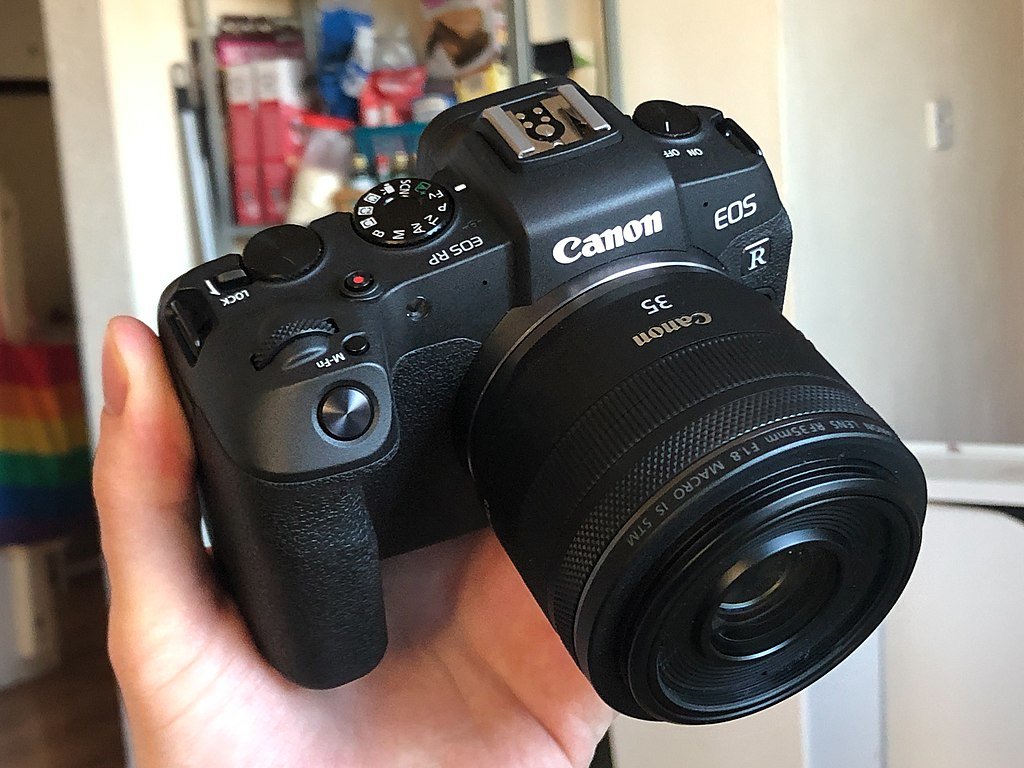
While both cameras have their own strengths and weaknesses, the EOS RP has several features that make it a great choice for photographers who want a full-frame camera without breaking the bank.Here is how the Canon EOS RP is one of the best cheaper alternative for Sony Alpha 7 III.
Sensor
Full Frame or APS-C The sensor is one of the most important components of a camera, as it directly affects the quality of the images produced. Both the Sony Alpha 7 III and the Canon EOS RP have full-frame sensors, which means they are larger than APS-C sensors commonly found in other cameras. Full-frame sensors provide better low-light performance and higher image quality, making them ideal for professional photographers who demand the best.
Autofocus
Autofocus is another crucial feature of a camera, especially for fast-paced and action-packed photography. The Sony Alpha 7 III has an impressive 693 phase-detection autofocus points and 425 contrast-detection autofocus points, which enable it to track and capture moving subjects with precision. Meanwhile, the Canon EOS RP has 4779 autofocus points, which is slightly lower than the Sony but still highly capable of capturing fast-moving subjects.
Speed
Both cameras have excellent continuous shooting capabilities. The Sony Alpha 7 III can shoot up to 10 frames per second in RAW for up to 89 frames, while the Canon EOS RP can capture up to 5 frames per second in RAW for up to 50 frames. The Sony camera has a faster maximum shutter speed of 1/8000 second compared to the Canon’s 1/4000 second.
Design
Dimension and Weight Comparison The Sony Alpha 7 III and Canon EOS RP are both compact and lightweight cameras, but the Canon is smaller and lighter. The Canon weighs only 485g (including battery and memory card), while the Sony weighs 650g. The Canon EOS RP is also more compact, measuring 132.5 x 85 x 70mm compared to Sony’s 126.9 x 95.6 x 73.7mm.
Viewfinder and LCD Monitor
Both cameras come with an electronic viewfinder and a tilting LCD touchscreen monitor. The Sony Alpha 7 III has a larger and higher resolution viewfinder with 2,359,000 dots and 100% coverage, while the Canon EOS RP’s viewfinder is smaller with a lower resolution of 2,360,000 dots but still covers 100%. However, the Canon EOS RP’s touchscreen monitor is more versatile, being fully articulating while the Sony’s screen only tilts.
Battery life
Battery life is an important consideration for photographers, especially when traveling or shooting for extended periods. The Sony Alpha 7 III has a longer battery life, capable of shooting up to 710 shots per charge, while the Canon EOS RP can only shoot up to 250 shots per charge.
Lens Mount and Availability
Both cameras have a different lens mount. The Sony Alpha 7 III uses Sony’s E-mount while the Canon EOS RP uses Canon’s RF mount. Sony has a larger lens lineup for its E-mount, with more than 50 lenses available, including third-party options from brands such as Sigma and Tamron. However, Canon has been aggressively expanding its RF lens lineup and currently has 20 lenses, and it’s growing steadily.
Price
One of the most significant differences between these two cameras is the price. The Sony A7 III currently retails for around $1,998, while the Canon RP is priced at around $999. This is a significant price difference, and it makes the Canon RP a more accessible option for photographers on a budget or those who don’t want to spend too much money on a camera.
The Canon RP is a capable camera that offers a lot of features for its price point. While it doesn’t quite match the Sony A7 III in terms of autofocus performance or video capabilities, it still offers a lot of value for photographers who prioritize stills photography and want a full-frame camera on a budget.
The Canon RP’s smaller size and weight also make it a more travel-friendly option compared to the Sony A7 III, and its fully articulating touchscreen LCD monitor is a useful feature for vloggers or anyone who needs to shoot from unusual angles.
So that’s it, there you go. These are the best alternatives you should look forward to if you are planning to buy Sony A7 III.
- Also Read- Red Komodo vs Canon C70 Which Is Better
- Also Read- Is FUJIFILM X-T3 Worth It In 2023? Review
- Also Read- The Batman Cinematography Analysis (In-Depth)

